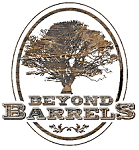Background blogs:
https://www.bbaging.com/blogs/news/barrel-expansion-and-contraction-is-a-myth-kinda
https://www.bbaging.com/blogs/news/how-do-i-know-when-its-ready
These two blogs are actually strongly related. Based on feedback from social media etc, some people love to age their liquor for 2 weeks while others prefer to age the exact same spirit with the exact same wood for 4 months.
There are many possible reasons for this, the first is simply that different people prefer different flavor profiles. Lots of people prefer a light blonde ale, and others prefer a huge IPA. Both are equally valid. In general, the shorter the aging time is, the lighter the wood flavor profile is. Obviously, conversely, the longer you age for, the stronger the wood flavor profile is.
The other factors get a little more "sciency".
Part 2 of the Barrel expansion is a myth - since the molecular motion aka pressure of all of the liquid you are aging is omnidirectional, it presses equally on the bottle you are aging in, and on the stave, assuming the bottle is sealed. Glass is much stiffer that the wood a barrel is made of, so for the same given temperature swing, the expansion and contraction is usually greater with stave aging in a sealed glass bottle. Having a larger air volume in the bottle decreases this since the air acts as a "spring" absorbing some of the pressure swings. If you happen to want lower expansion and contraction, a leaky seal or a flexible top could exactly simulate the expansion and contraction of a real barrel. The difference is that you can precisely engineer it instead of relying on hundreds of varying barrels and the subsequent blending to get a consistent product. There will still be some variations in flavor from tree to tree and even from different parts of the same tree.
So, since everything that actually matters outside of the word barrel happens when aging with staves in a bottle, the same barrel aging dynamics happen when you are aging at home with the staves. If you keep your bottle in a cold basement where the temperature stays very constant, it will age much slower than if you age it in a room that gets sunlight and has lots of temperature swings. How tight the seal is on your bottle will also affect how quickly something ages along with the air volume in the bottle.
For all of these reasons and many more, its important to always take a small taste every week or so to determine what timeframe works best for you specifically... both your own taste preferences and how your environment affects the aging process.
Also, many people have been asking if they need to season the wood with something first. A little background, in the home aging market, some companies sell products that require multiple steps of seasoning / rinsing etc to get a good finished product. Beyond Barrels uses high quality wood precisely engineered so you can simply drop it into a bottle, and you don't have to season the staves with anything or take extra steps etc.
However, once you have some experience, many people really enjoy seasoning a stave in a ziploc bag for a day or so with whiskey, red wine, sherry, port, etc. It adds a nice new and unique dimension to your aging projects.
"What do I do if I overage it?" Depending on how much you overaged something, relative to your tastes, you will need to add in some Blanco or some of the original bourbon from another bottle. You can also make some amazing cocktails from overaged liquor. Ideally, get a good blend ratio figured out with a shots worth of overaged liquor first. Also, keep in mind that the wood flavor notes will "marry" some over time after you remove the stave. I guestimate that the wood flavor strength can go down by 5% or so over a month.
